This post contains affiliate links.
Welcome, hummingbird enthusiasts! In this article, I explore the vibrant world of hummingbird flora, revealing the best blooms these exquisite creatures cannot resist. Get ready to transform your garden into a buzzing haven as I uncover the flowers that promise to attract an iridescent flurry of hummingbird wings. Whether you are a seasoned bird watcher or new to the avian admirers club, you will find invigorating insights on crafting the ultimate nectar-rich paradise for our feathered friends.
Discover the Best Hummingbird Flowers for Your Garden
Creating a hummingbird-friendly garden is like painting a colorful canvas that buzzes with life and melody, demanding a thoughtful selection of the best flowers that capture the hearts of these vibrant avians.
As you delve into the world of gardening, prioritize types of flowers that provide both nectar and an attractive habitat for hummingbirds. Love for these mesmerizing creatures is best expressed by planting an array of blooms that cater to their unique feeding habits and preferences.
To ensure that your garden is abuzz with hummingbird activity, opt for flowers with funnel-shaped blooms, such as Trumpet vines and Foxgloves, which offer easy access to nectar and a landing platform for the tiny birds.
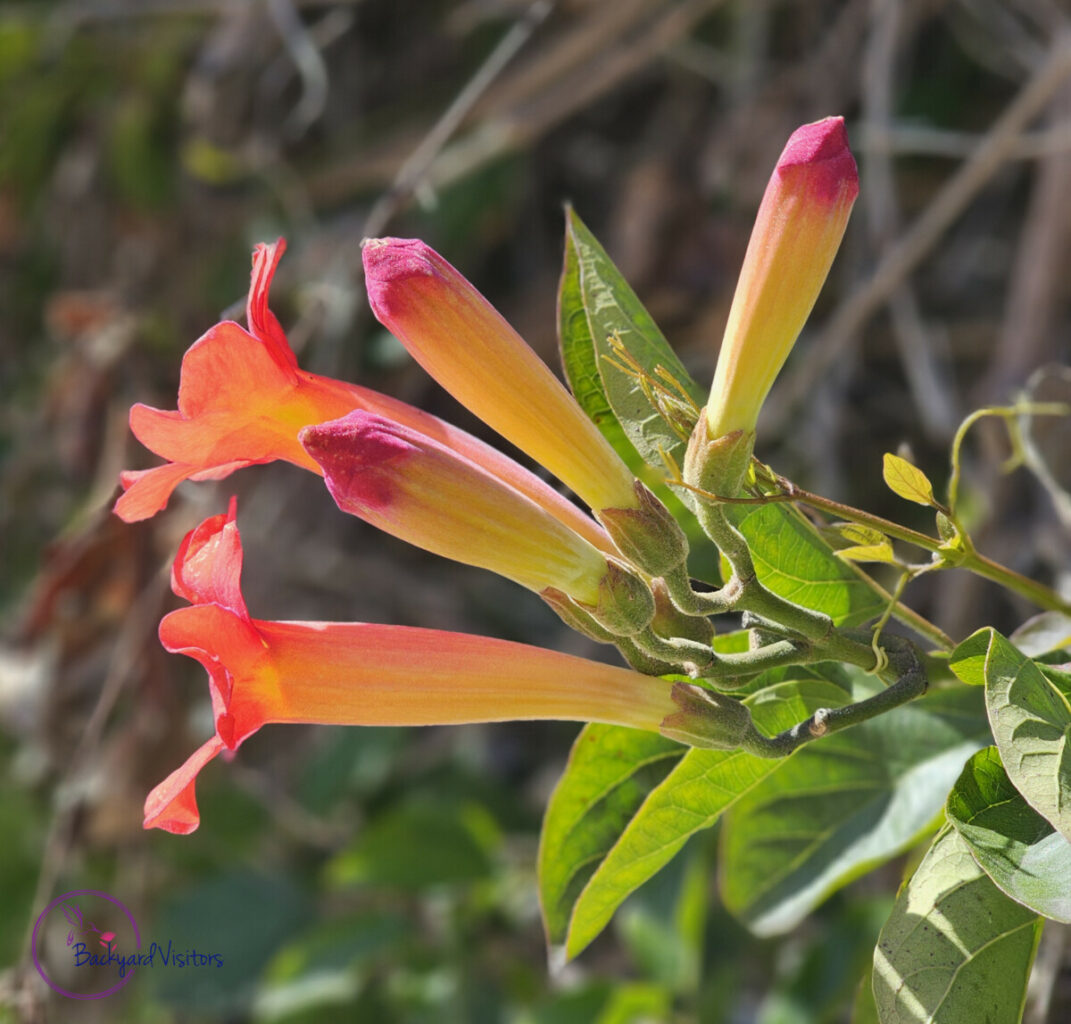
Famed for their nectar-rich qualities, Bee balms and Salvias come in vivid reds and purples that hummingbirds absolutely adore. These radiant flowers not only draw the hummers in but also keep them returning throughout the blooming season.
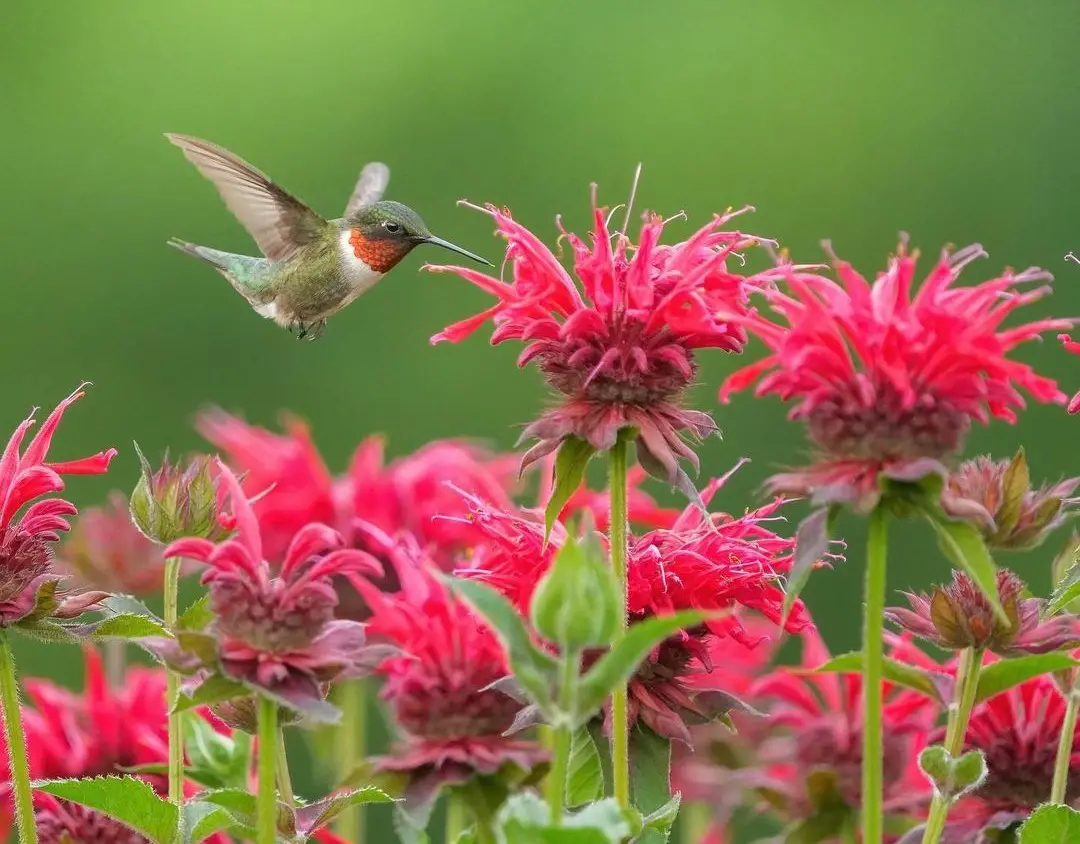
Red Bee Balm – (Monarda didyma)
Photo by: Andy Raupp
Include native species like Wild columbine and Cardinal flower to support both the local ecosystem and the hummingbirds’ needs. Often, these native varieties are hardy and require less care, making them an excellent choice for any gardener.
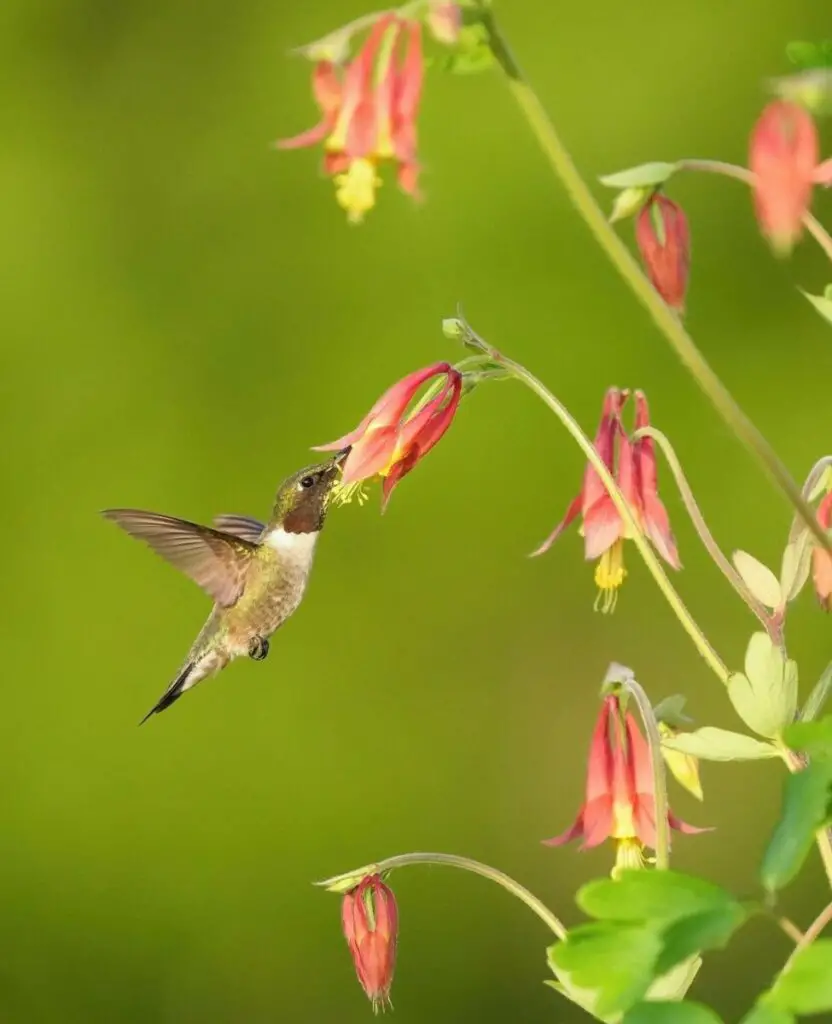
Eastern Red Columbine – (Aquilegia canadensis)
Photo by: Andy Raupp
Do not forget the classic favorites such as Lantana and Fuchsia; their clustered blossoms provide bursts of color and an abundant feast of nectar. With a thoughtful combination of these best flowers, your garden will transform into a haven, humming with the wings of delighted visitors.
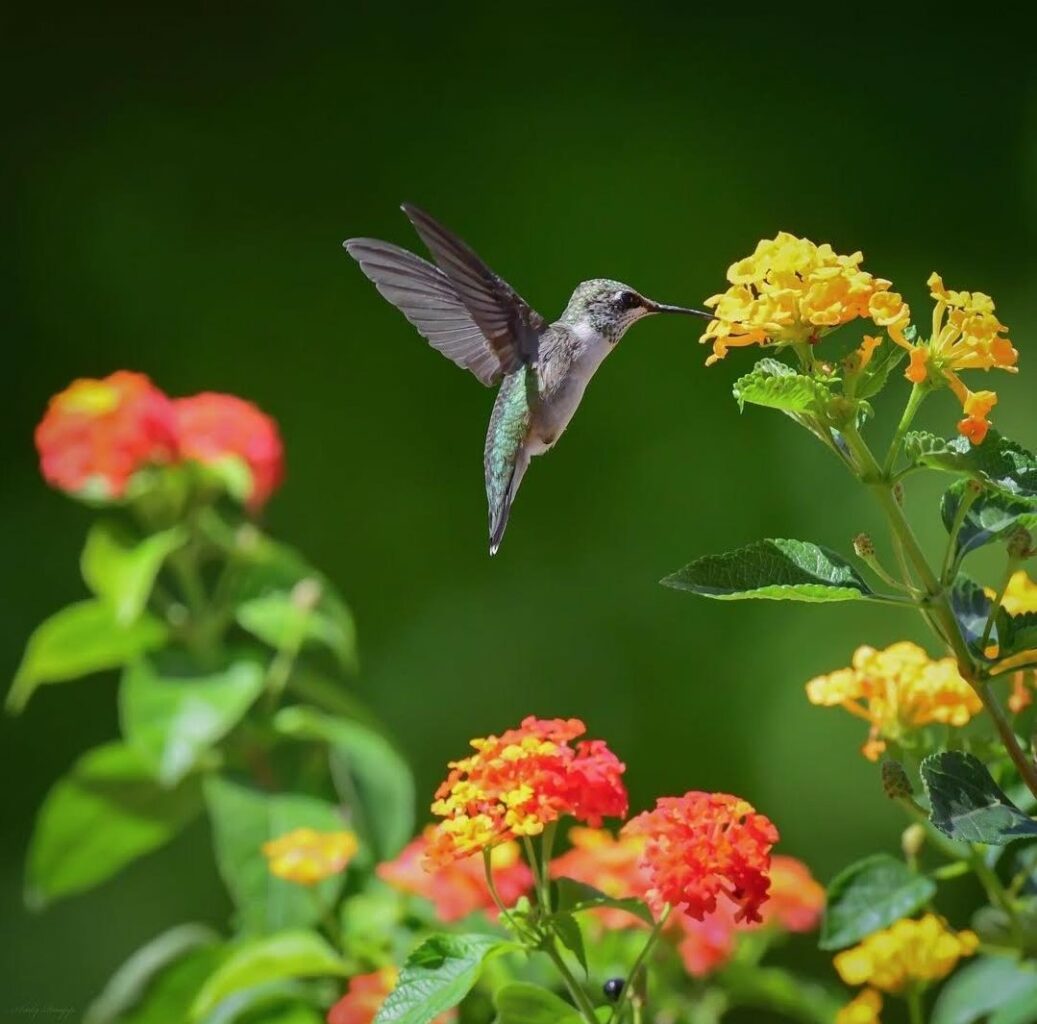
Lantana Plant
Photo by: Andy Raupp
Whether you are an experienced horticulturist or a novice eager to invite the company of these feathered jewels, include the flowers hummingbirds love in your garden design to ensure a lively and enchanting outdoor sanctuary that thrives season after season.
Why Bee Balm is a Hummingbird Favorite
When it comes to creating a haven for hummingbirds in your garden, understanding the blooms that these vibrant birds prefer makes all the difference. Among the flowering favorites, Bee balm stands out as a top pick, captivating our feathered friends with a medley of essential features.
Bee balm, with its radiant red blossoms, resonates with the visual preferences of hummingbirds. The color red serves as a natural beacon, drawing hummingbirds into gardens with the promise of sweet nectar.
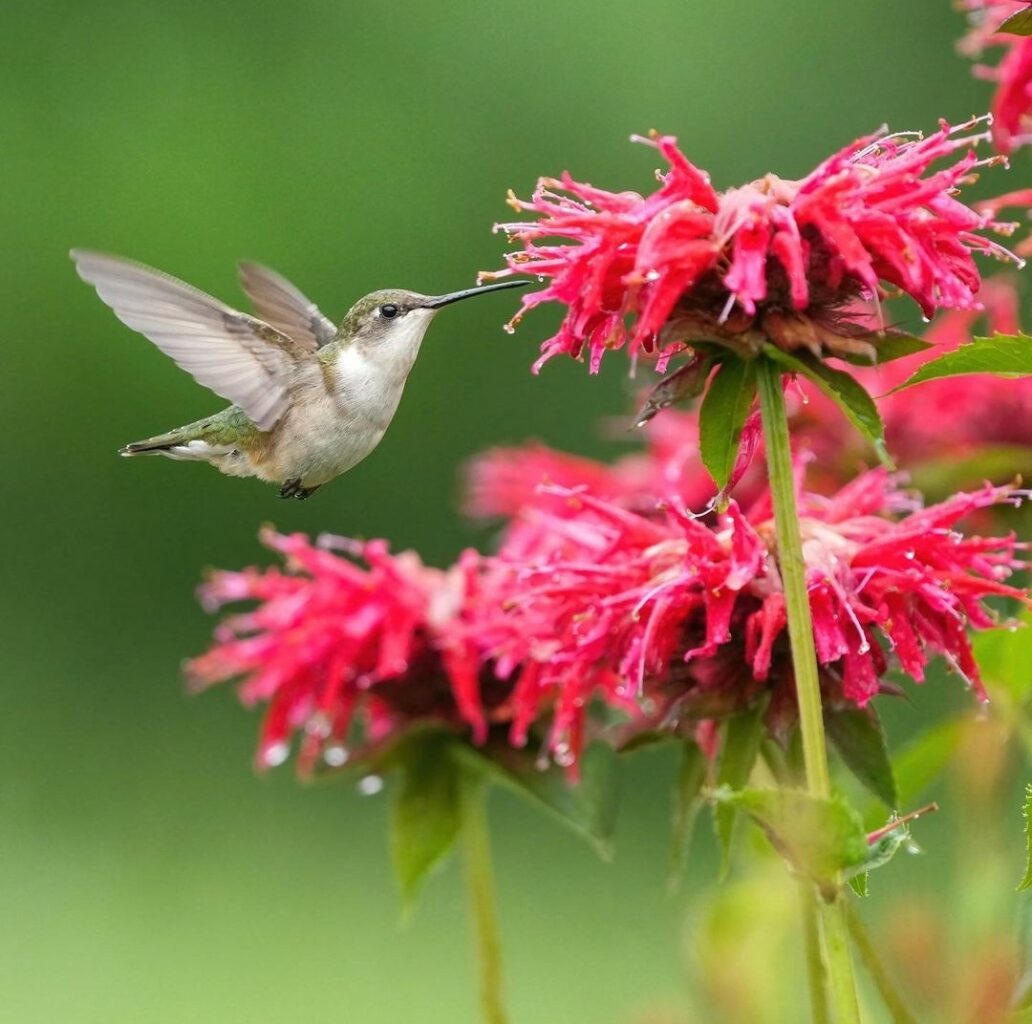
Red Bee Balm – (Monarda didyma)
Photo by: Andy Raupp
Hummingbirds love Bee balm not only for its striking hue but also for the plant’s structural design, featuring tubular flowers that are a perfect fit for their long, slender bills. This allows for efficient feeding and positioning that hummingbirds find most accommodating.
Additionally, Bee balm flowers throughout the summer, provide a consistent source of nectar during the months when hummingbirds are most active in gardens.
Planting Bee balm in your garden offers a dual advantage. It is a favorite among hummingbirds with its aroma and color as well as detering many unwanted pests, making it a natural pest control agent.
For those eager to attract hummingbirds, incorporating Bee balm into your garden design is extremely beneficial. Its hardy nature ensures that once planted, Bee balm becomes a dependable and enchanting fixture amid your flowering displays.
Successful cultivation of Bee balm requires sunny spots with well-drained soil, ensuring that the plant thrives and consequently tempts the local hummingbirds with its lush nectar reserves. By integrating Bee balm into your garden, you foster an environment where these charming birds will flourish, all the while enhancing your garden’s aesthetic with these splendid flowers.
As you ponder the variety of flowers to enrich your outdoor sanctuary, consider Bee balm – a bloom that is truly treasured by hummingbirds and garden enthusiasts alike.
Attracting Hummingbirds with the Lively Red Flowers of Trumpet Honeysuckle
As you delve into creating the ultimate haven for these aerial acrobats, let us unlock the allure of the Trumpet honeysuckle, a vine known for its vibrant red flowers that are akin to hummingbird magnets.
Incorporating Trumpet honeysuckle into your garden is a strategic move if you are aiming to attract hummingbirds. These birds can not resist the tubular shape and rich red hue of the blooms, providing a perfect fit for their slender beaks and innate attraction to red.
The Trumpet honeysuckle is a hardy plant that thrives in many environments, making it a versatile choice for hummingbird enthusiasts across various hardiness zones.
Why do red flowers hold such a powerful sway over hummingbirds? Studies suggest that these creatures have evolved to be drawn to red as it usually signals a rich, nectar-filled reward. Thus, by planting Trumpet honeysuckle, you are tapping into a hummingbird’s instinctual search for sustenance. Best of all, as these flowers blossom, they offer not just a feast for your feathered guests, but also a visual spectacle for your garden.
To ensure that Trumpet honeysuckle ranks among the best hummingbird flowers in your collection, provide them with ample sunlight and well-drained soil. By doing so, their growth and flowering potential is maximized, ensuring a longer blooming period.
The abundant flowers become a reliable source of nectar, significantly enhancing your ability to attract hummingbirds. It is essential to complement your garden with a mix of flowers. Following up on the allure of Bee balm, as previously discussed, Trumpet honeysuckle adds diversity to your nectar offerings.
Together, they create a landscape rich in the blooms and nourishment that hummingbirds desire. Embrace the magnetism of red flowers and watch as your garden becomes a favored pit stop for these enchanting birds.
Below is a list of the top 10 red blooming tubular flowering plants for hummingbirds:
- Trumpet Vine (Campsis radicans)
- Red Hot Poker (Kniphofia uvaria)
- Pineapple Sage (Salvia elegans)
- Cardinal Flower (Lobelia cardinalis)
- Bee Balm (Monarda didyma)
- Penstemon (Penstemon barbatus)
- Red Buckeye (Aesculus pavia)
- Coral Honeysuckle (Lonicera sempervirens)
- Scarlet Gilia (Ipomopsis aggregata)
- Hummingbird Sage (Salvia spathacea)
Explore the Best Flowers That Hummingbirds Like
Creating a vibrant garden that invites the delightful iridescent flutter of hummingbirds is about aesthetics. Select the best flowers that these pollinators adore. Embarking on this journey, one quickly realizes that the best gardens are thoughtfully planted with species that entice these winged wonders.
Among the myriad of blossoms, there are some that stand out as the zenith of allure for these creatures. For instance, the fiery spikes of Bee balm are irresistible to hummingbirds, its tubular blooms providing an ample well of nectar. This flower is a hotspot for hummingbird activity.
In addition, it is paramount to include a variety of plant types to ensure a long season of bloom. This strategy not only sustains a continuous food source for your garden visitors but also ensures that the splendor of your garden persists from spring through fall.
The Trumpet honeysuckle and Salvia plants, with lively red flowers, serve as excellent examples of the best flowers that hummingbirds prefer. Not only do hummingbirds like its vibrant colors and nectar-rich offerings, but its hardiness across many growing zones makes it an easy choice for gardeners aiming to appeal to these fast-flying birds.
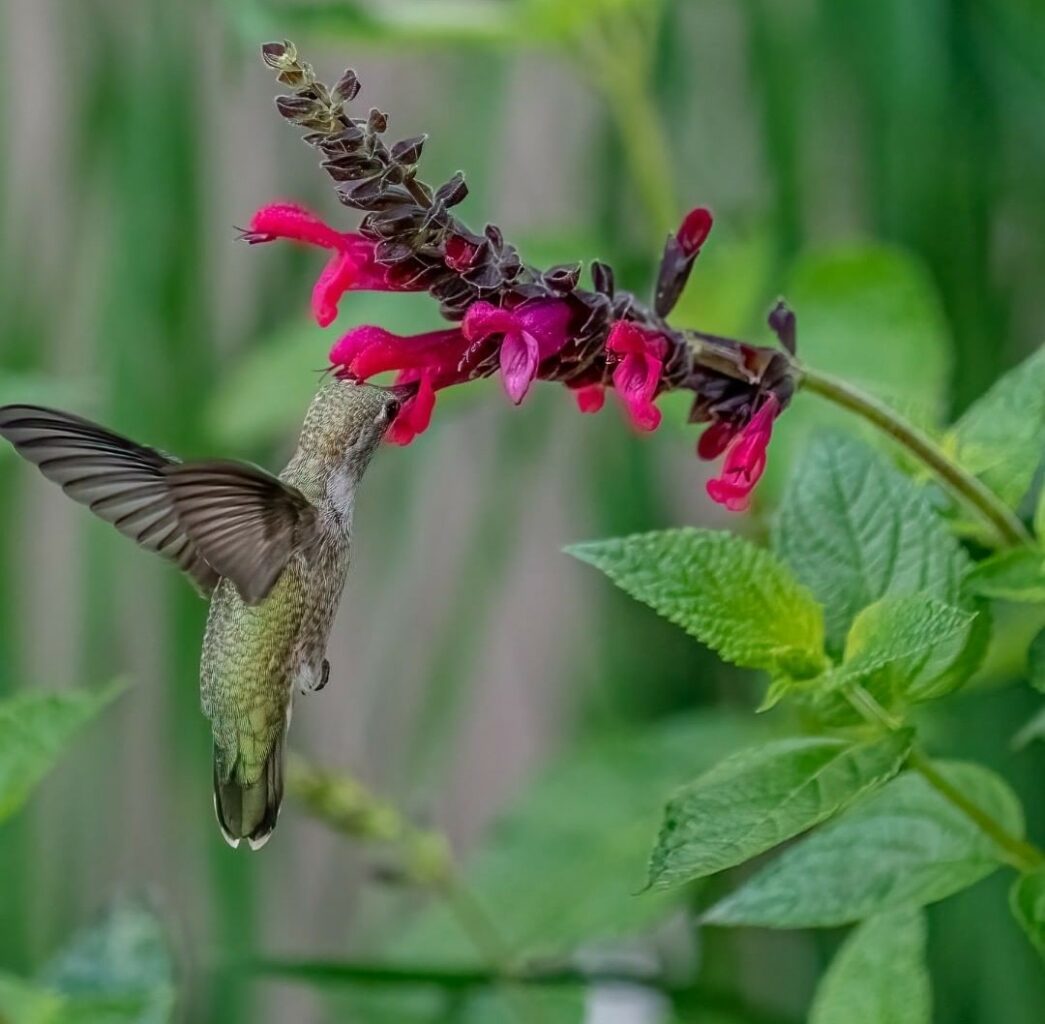
Salvia Plant
Photo by: Bob Free
Remember that the goal is to attract and support these creatures. By intertwining the best flowers into the tapestry of your garden, you create a haven for various hummingbird species.
This harmony of flora and fauna encapsulates the enchantment of nature, turning your outdoor space into a living tableau that is both breathtaking and beneficial to the ecosystem. Let us venture forth and radiate our passion for these exquisite creatures through the flowers we plant, fostering a paradise for all to enjoy.
Below is a list of the top 10 nectar producing flowering plants for hummingbirds:
- Salvia (Salvia spp.)
- Bee Balm (Monarda didyma)
- Trumpet Vine (Campsis radicans)
- Zinnia (Zinnia elegans)
- Columbine (Aquilegia spp.)
- Lupine (Lupinus spp.)
- Penstemon (Penstemon spp.)
- Fuchsia (Fuchsia spp.)
- Lantana (Lantana camara)
- Coral Bells (Heuchera spp.)

Zinnia Plant
Photo by: Mz13hummingbirds
Creating a Hummingbird Haven: Best Plants to Include
To create a garden that serves as a vibrant haven for hummingbirds, it is essential to choose the best plants known to attract these lively birds. The rich variety of species of hummingbirds to grace your garden will be enchanted by a well-thought-out selection of flowers they do love.
Start by integrating plants that offer abundant nectar, such as the fiery spikes of the Bee Balm, which stands as a firm favorite among these iridescent avian creatures. Its tubular flowers provide an excellent source of nourishment and have earned their reputation as a hummingbird magnet.
Read my article: Increase Backyard Hummingbird Activity in 7 Days or Less

Red Bee Balm – (Monarda didyma)
Photo by: Andy Raupp
Incorporate the effervescent Trumpet vine into your garden to catch the eye of passing hummingbirds with its lively red flowers. This plant not only captivates with its color but also with the copious amounts of nectar it holds, positioning it among the top contenders in your floral ensemble.
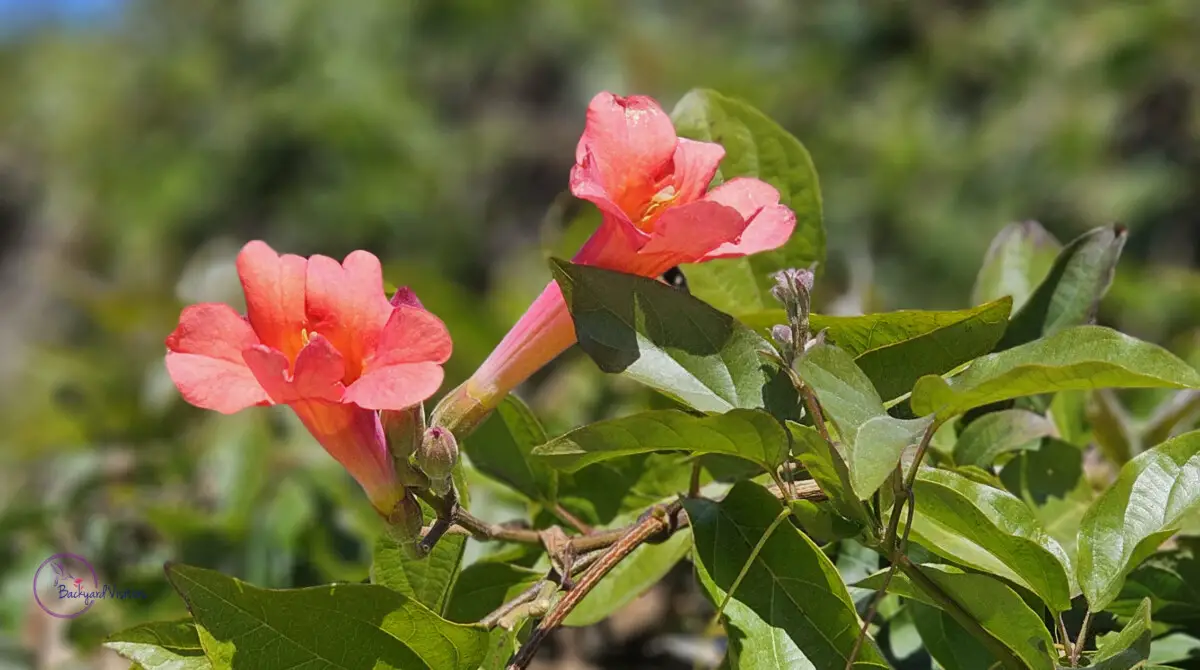
As you browse for the best flowers to draw in hummingbirds, consider choices that offer duality of purpose, catering to both the pollinating insects and feathered visitors.
Delving into the world of hummingbird-friendly gardening, remember to opt for plants that will bloom at staggered intervals throughout the growing season, ensuring that your winged friends have a constant source of sustenance.
Read my article: Attracting Hummingbirds: Do Hummingbirds Prefer Flowers or Feeders?
The collective charm of these chosen flowers and plants serve an aesthetic purpose and set the stage for an interactive and dynamic ecosystem right in your backyard. Tailor your landscape to suit the tastes of the hummingbirds and be rewarded with the flitting and buzzing of activity as these beloved birds return year after year, making your garden their treasured retreat.
The Allure of Flowering Red Hot Poker for Hummingbirds
The striking flowering spectacle of the Red Hot Poker plant is an undeniable magnet for hummingbirds. With their vibrant red and fiery orange hues, these unique blooms truly stand out in the garden landscape, creating a visual beacon for these fluttering jewels of the sky.
The tubular shape of Red Hot Poker flowers is perfectly tailored to hummingbirds, allowing these tiny avians to effortlessly reach the sweet nectar from within. As gardeners looking to attract hummingbirds, strategically incorporate and choose these beautiful plants.
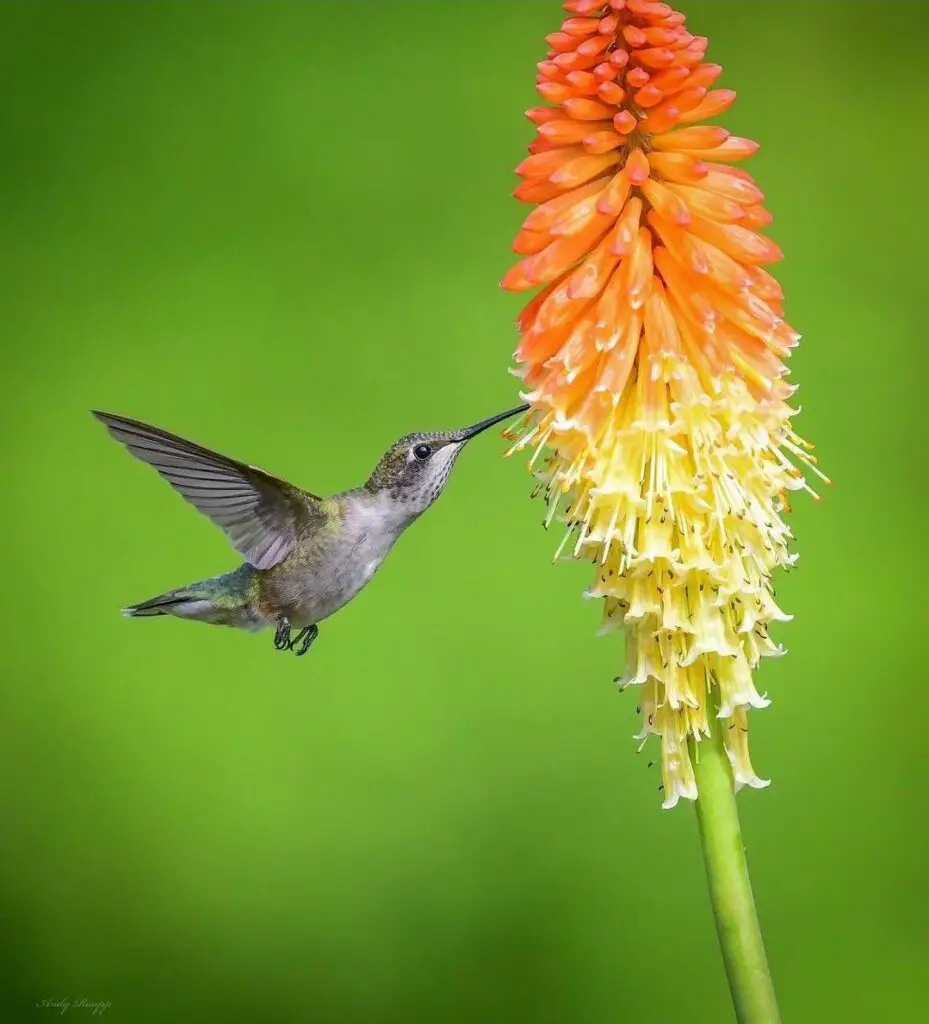
Red Hot Poker Plant
Photo by: Andy Raupp
Hummingbirds are naturally drawn to the color red such as the Red Hot Poker plant. Add these dramatic plants to your garden to make it a haven for hummingbirds. Their tall spikes rise with dignity among other garden flowers, offering a vertical appeal that will diversify the visual interest of your green space.
The Red Hot Poker plant is captivating to the eye and also robust, withstanding a variety of garden conditions and still managing to flourish.
Aside from their stunning appearance and nectar-rich offerings, these plants serve as a beacon, signaling that your garden is a resource hub for hummingbirds. As they dart from flower to flower, hummingbirds facilitate pollination, enhancing the vitality and biodiversity of your garden ecosystem.
To maximize the allure for hummingbirds, consider planting Red Hot Poker in groupings. This amplifies their visual impact and creates a more bountiful feeding ground, making it easier for hummingbirds to spot and exploit.
To create a diverse sanctuary that hummingbirds adore, intersperse Red Hot Poker with other favored flowers like Bee balm and Trumpet honeysuckle. This multi pronged approach ensures a prolonged blooming season in your garden, offering a consistent supply of nectar.
Embrace the charm of these fiery spikes, and you will find your garden transformed into a buzzing and humming symphony, with Red Hot Poker playing a leading role in attracting the iridescent throng of hummingbirds you seek.
The Favorite Blooms of Hummingbirds: An Insight into Their Floral Preferences
Hummingbirds’ floral preferences reflect their intrinsic need for energy-dense nectar. Understanding these preferences is paramount for enthusiasts seeking to attract these avian jewels to their gardens.
Among the blooms that earn the status of hummingbird favorites, those in shades of red and orange consistently captivate these birds, translating into heightened garden visits. Species of flowers such as the fiery Red Hot Poker and the Cigar plants not only provide a visual spectacle but also an abundant nectar source, proving irresistible to hummingbirds.
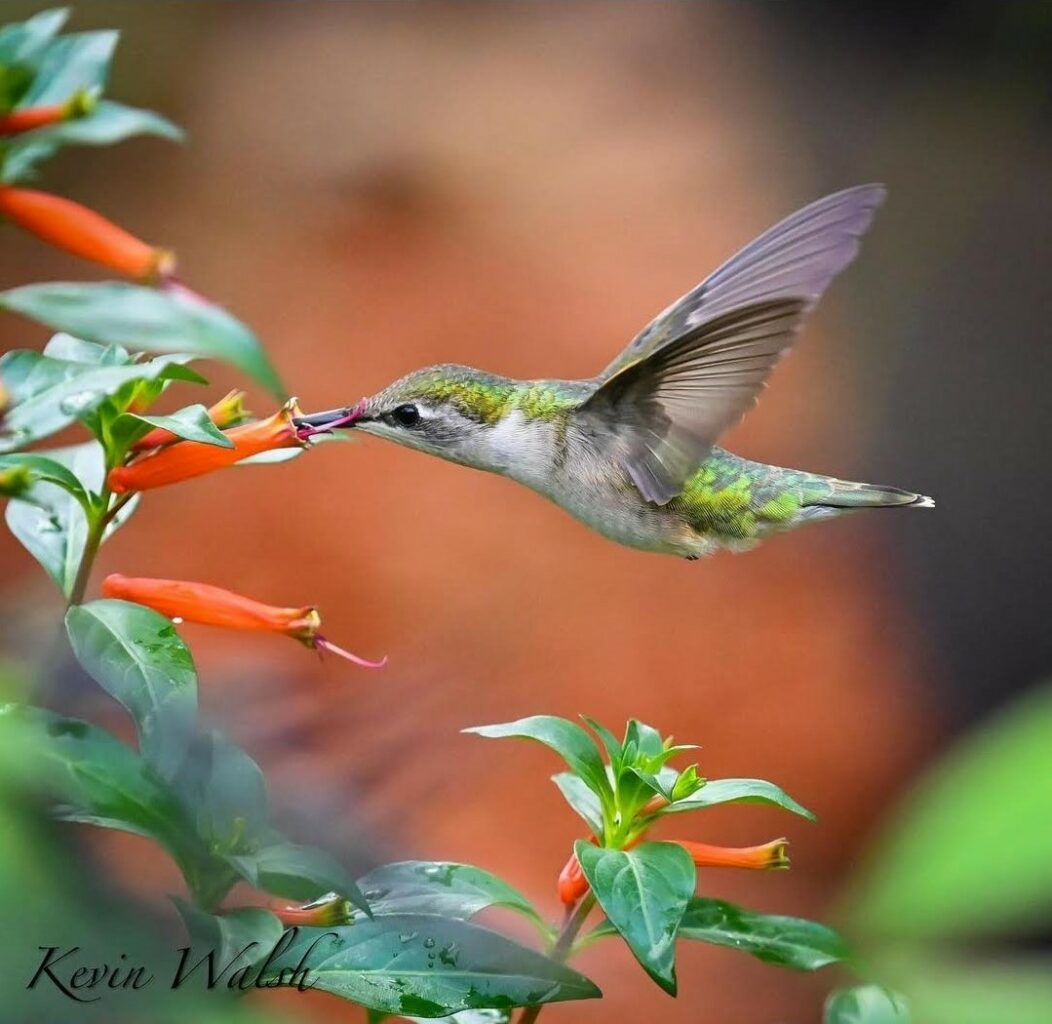
Cigar Plant – (Cuphea ignea)
Photo by: Kevin Walsh
Flowers such as the beloved Bee balm, with its tubular architecture, are perfectly adapted for the extended beaks of hummingbirds. These blooms offer a mutualistic relationship wherein hummingbirds get their coveted nectar, and the flowers benefit from pollination.
The Trumpet honeysuckle, another hummingbird magnet, boasts vibrant red blooms that serve as beacons for their avian admirers. Hummingbirds are innately drawn to the color red, making flowers of this hue a garden staple.
It is not merely about individual blooms. Understanding hummingbirds’ overall floral preferences enables individuals to craft a nectar-filled landscape that sustains a thriving ecosystem.
By incorporating these favorite flowers, from the striking Bee Balm to the alluring Red Hot Poker, enthusiasts will ensure their gardens are buzzing with the iridescent flitter of hummingbird wings, making every visit a spectacle of nature’s synergy between flora and fauna.
How Your Garden Benefits from Flowers Hummingbirds Love
When you plant flowers that hummingbirds love, you are creating a beautiful, vibrant garden along with cultivating an ecosystem that vastly improves the health and diversity of your outdoor space.
By choosing blooms that naturally attract these dazzling birds, you encourage them to visit your garden, providing a myriad of garden benefits. These tiny pollinators bring life and movement to your yard, creating a captivating display that uplifts the spirit of anyone who observes them.
Select plants that hummingbirds favor and you are inadvertently enhancing the biodiversity of the area. These birds consume nectar as their primary food source but also feed on insects, which helps control pest populations.
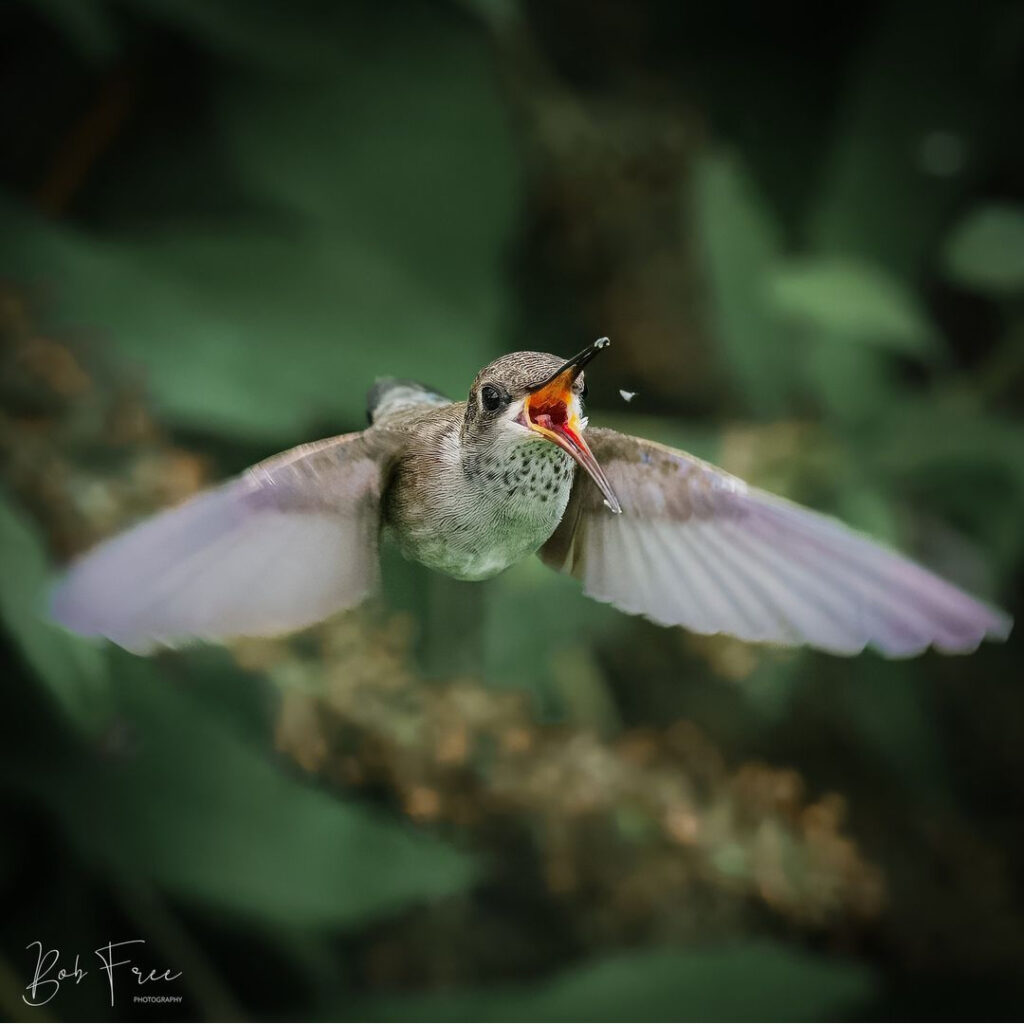
Photo by: Bob Free
Garden plantings that hummingbirds love often require less pesticide since the birds act as a natural form of pest management, thus promoting a healthier environment for all flora and fauna.
The flowers you choose to attract these birds will also have a symbiotic relationship with the hummingbirds. As they fly from bloom to bloom, they transfer pollen, fostering a thriving, flowering garden.
Every hummingbird that graces your garden becomes a vital partner in the life cycle of your plants. Flowers such as the invigorating Bee balm, Trumpet Honeysuckle, or the fiery Red Hot Poker satisfy the floral preferences of hummingbirds and also ensure that the very plants that beckon them are consistently pollinated and poised to flourish.
By designing your garden with these visitors in mind and enjoying the visual spectacle of birds in flight, invites an intricate dance between plant and pollinator that unfolds throughout the seasons.
When creating a hummingbird haven, remember that the benefits extend far beyond aesthetics. You are fostering an ecological sanctuary that supports life, nurtures biodiversity, and grants you a front-row seat to the captivating aerial ballet of hummingbirds.
Bringing Life to Your Garden with the Best Flowers for Hummingbirds
Bringing life to your garden is about creating a vibrant ecosystem where nature thrives. Among the most enchanting garden visitors are hummingbirds; those tiny avian wonders that bring dynamic motion and beauty to any garden they grace.
To attract these birds, planting the best flowers for hummingbirds is essential. Not only do these blooms offer an abundant source of nectar, but they also provide a spectrum of colors that is a feast for both bird and human eyes alike.
When planning your garden, consider plants that bloom at different times, ensuring a consistent supply of flowers that hummingbirds like throughout the season. With its spiky red blooms that stand like torches against the green backdrop, the Red Hot Poker is a magnet for hummingbirds. These striking flowers not only add a fiery accent to your garden design but also serve as beacons to our feathered friends.
Read my article: Attracting Hummingbirds: The Best Plants for Hummers

Red Hot Poker Plant
Photo by: Andy Raupp
Similarly, the vibrant red flowers of Trumpet Honeysuckle are irresistible to hummingbirds and make your garden a noted stopover in their daily foraging routes. These tubular blossoms are particularly adept at accommodating the long beaks and tongues of hummingbirds, making them ideal sources of nectar.
On the other hand, Bee balm is a top pick for those looking to attract a crowd of admirers. The plant’s unique shaggy flower heads of pink, purple, red, or white are as remarkable to observe as they are attractive to your winged guests. Opting for such flowers ensures your garden benefits twofold, supporting pollinators while gifting you with the aerial ballet of hummingbirds.
The favorite blooms of hummingbirds play an integral role in bringing life and vibrancy to your garden. Including a variety of these plants caters to the diverse preferences of hummingbirds and also contributes to a robust, energetic, and healthy garden ecosystem. Choose the best flowers to plant to decorate your outdoor space and open it up as a haven for some of nature’s most exquisite creatures.
Like a Magnet: Flowers That Attract Hummingbirds
Some flowers act like a magnet, irresistibly drawing in the flitting splendor of hummingbirds with their vibrant petals. In the tapestry of your garden, particular blooms hold the secret to attract these fascinating birds by transforming your green space into a hummingbird oasis.
The allure of certain flowers for hummingbirds lies in their nectar, form and hue. Red is famously the most tempting color for these avian jewels; hence, integrating a palette of scarlet-toned blooms such as Salvia and Trumpet honeysuckle yields a lively congregation of feasting hummingbirds.
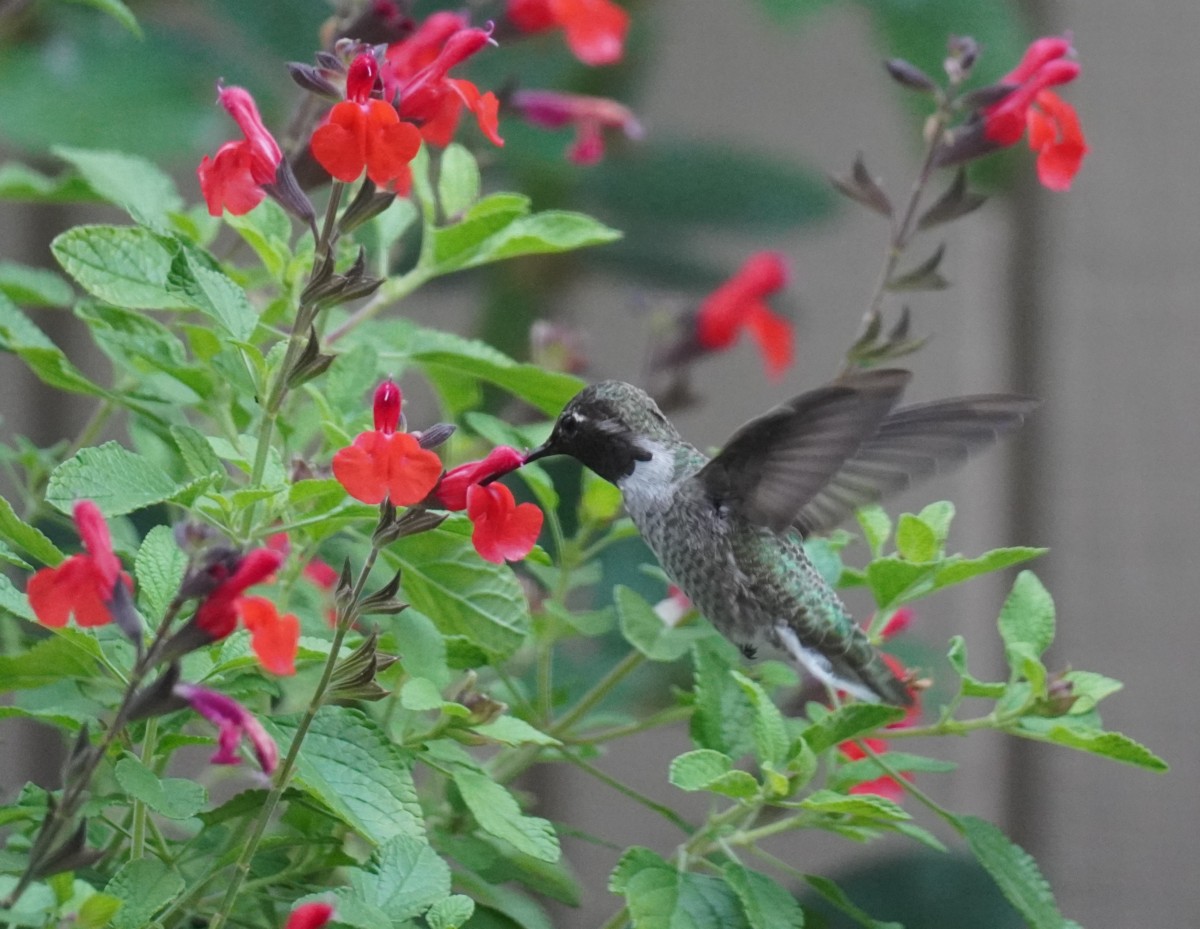
Radio Red Autumn Sage – (Salvia gregii)
The color is just as critical as the structure of a flower. Blooms such as Bee balm and Columbine plants present an ideal form to attract hummingbirds. Its tubular blossoms make for the perfect feeding station for your winged visitors, allowing them to sip nectar effortlessly. Include a variety of other tubular plants in your garden to amplify its appeal.
Understanding the favorite blooms of hummingbirds provides insight into their floral preferences, which can guide you in crafting a garden that benefits both the birds and the beauty of your outdoor environment. By bringing the best flowers for hummingbirds into your domain, you are doing more than just gardening; you are curating a living exhibit where the hum and thrum of these spectacular birds become the soundtrack to the visual splendor of their preferred flowers.
Check out my other posts on Hummingbird Questions
Frequently Asked Questions
Q: What are the best flowers to plant in my garden to attract hummingbirds?
A: To attract hummingbirds, plant varieties such as Trumpet vines, Foxgloves, Bee balms, Salvias, Wild columbine, Cardinal flower, Fuchsia, Lantana, Trumpet honeysuckle, and Red Hot Pokers. These flowers offer nectar-rich blooms and colors, such as vivid reds and purples, that hummingbirds adore.
Q: Why do hummingbirds prefer red and tubular-shaped flowers?
A: Hummingbirds are naturally attracted to the color red, which they associate with nectar-rich flowers. Tubular-shaped blooms like those of Bee balm and Trumpet honeysuckle are a perfect fit for their long, slender bills, making feeding efficient and comfortable for these tiny birds.
Q: How can I create a hummingbird-friendly garden that benefits the entire ecosystem?
A: Incorporate a mix of native and nectar-rich plants that bloom at staggered intervals to provide a continuous food source. This diversity supports not only hummingbirds but also beneficial insects like bees. By doing so, you help maintain healthy pollination cycles and contribute to local biodiversity.
Q: What are some additional benefits of planting hummingbird-attractive flowers in my garden?
A: By selecting flowers that hummingbirds love, your garden will host natural pollinators that help control pests and improve plant health and diversity. These birds also play a role in pollination, ensuring that your garden blooms successfully. Moreover, flowers such as Bee balm can also act as natural pest deterrents.
Q: Can I cater to both hummingbirds and bees with my garden plant selection?
A: Absolutely! Certain plants such as Bee balm are beloved by both bees and hummingbirds, providing a rich source of nectar and an attractive habitat. Including such dual-purpose plants in your garden will enhance the activity of these important pollinators and ensure a lively, thriving ecosystem.
Happy Hummingbird Watching!
Backyard Visitors participates in affiliate programs which compensate us for referring traffic.

